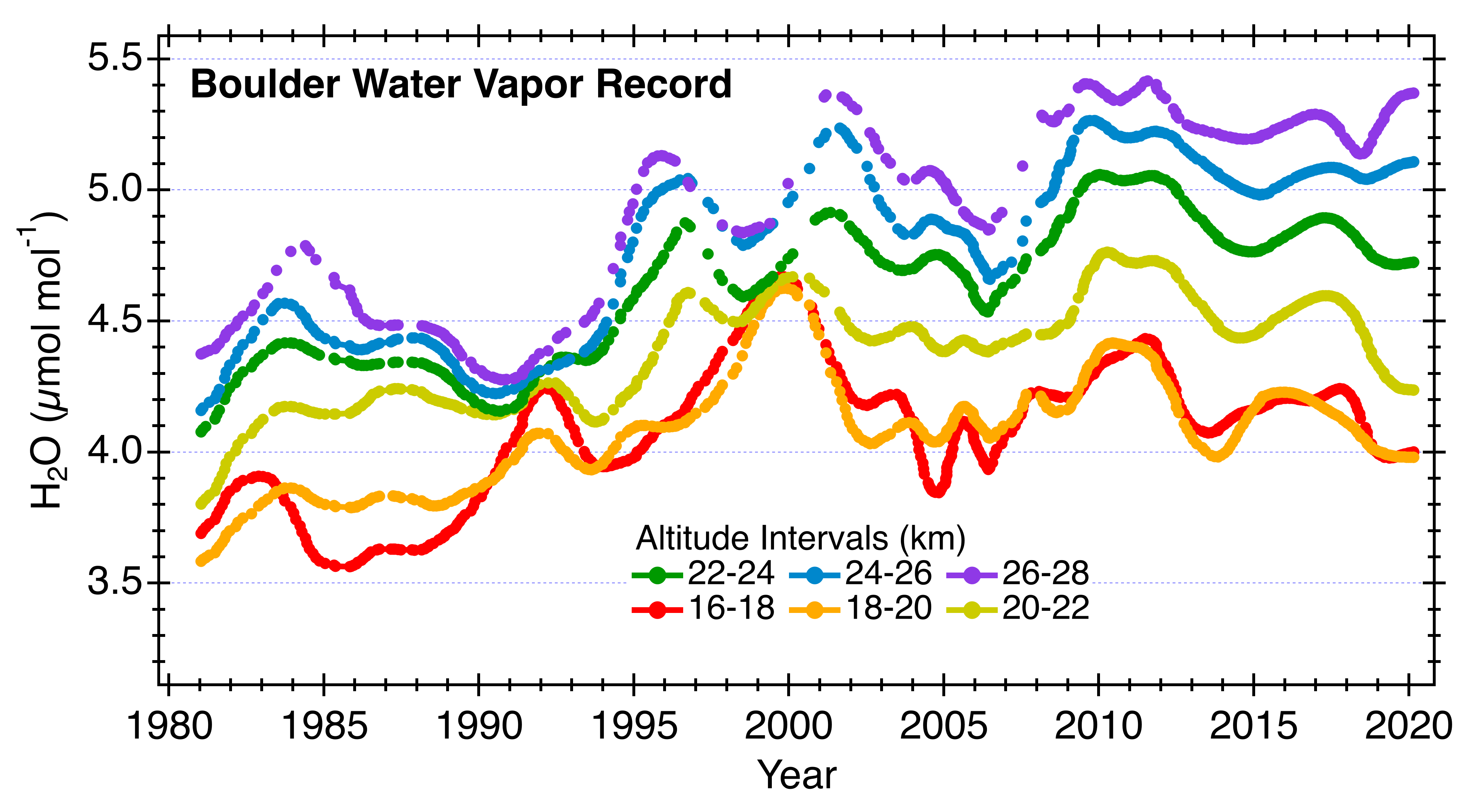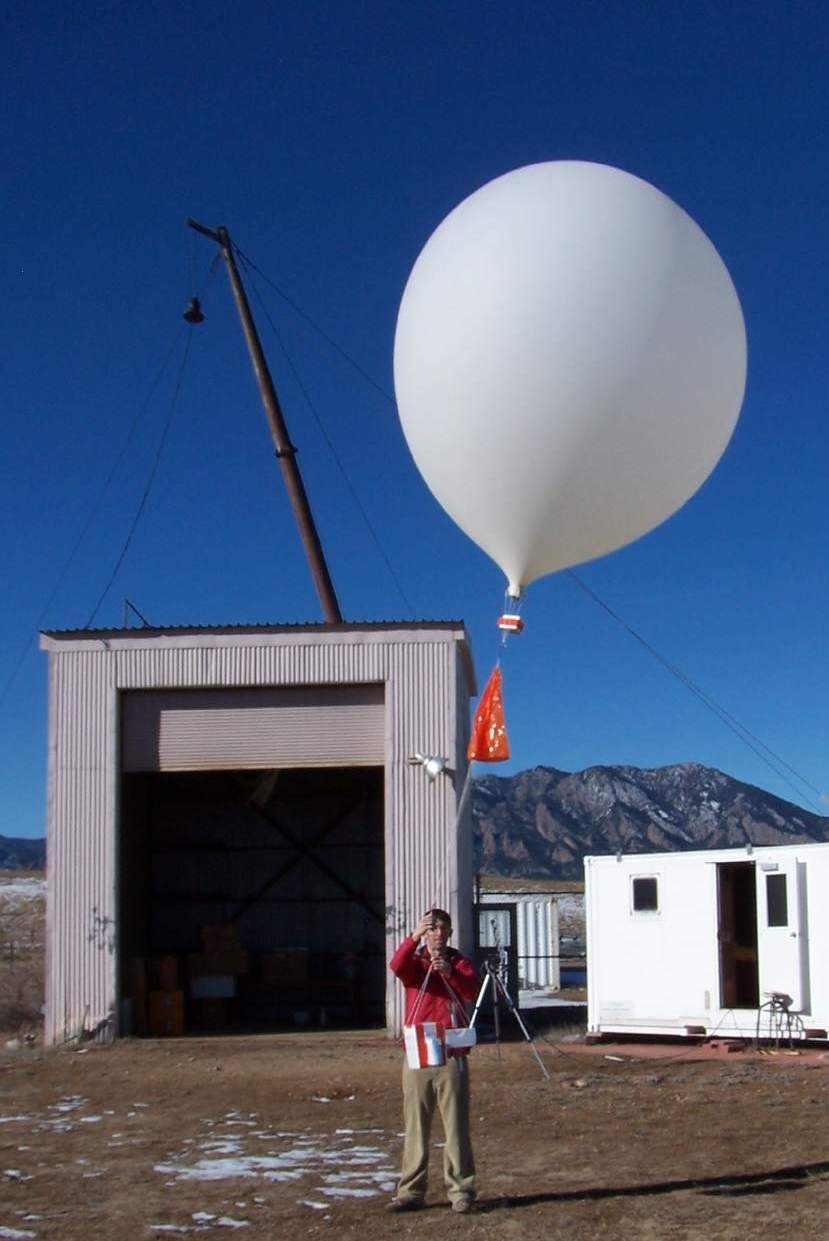NOAA/GML Marks 40 Years of Ballon-borne Water Vapor Measurements

May 29, 2020
In April 2020, the Global Monitoring Laboratory’s measurement record of upper atmospheric water vapor over Boulder, Colorado, surpassed 40 years in length. Balloon-borne frost point hygrometers, developed at NOAA in the late 1970s, have provided the high quality vertical profiles of moisture from the surface to the middle stratosphere (~28 km). NOAA’s measurement record at Boulder is by far the longest in the world, more than twice the length of any other upper atmospheric water vapor monitoring program.
NOAA has monitored atmospheric water vapor in the upper atmosphere for four decades because it is a powerful greenhouse gas. Even small changes in the humidity of the upper troposphere and lower stratosphere (UTLS), regions that are very dry compared to the lower atmosphere, exert strong leverage on global surface temperatures. Long-term trends in UTLS moisture may be indicative of changes in Earth’s large-scale overturning circulation that can alter the lifetimes of important ozone-depleting and greenhouse gases.
The GML upper atmospheric water vapor program also operates at two other sites: Hilo, Hawaii (utilizing staff of NOAA’s Mauna Loa Observatory), and Lauder, New Zealand (cooperative with the National Institute of Water and Atmospheric Research). Some frost point balloon launches are performed in coordination with satellite measurements of UTLS water vapor over the sites, providing the validation data that increase the scientific value of satellite measurements. Currently, GML’s balloon-based profile data are being used to validate stratospheric water vapor measurements by the Microwave Limb Sounder (MLS) on NASA’s Aura satellite and the third generation Stratospheric Aerosol and Gas Experiment (SAGE III) spectrometer aboard the International Space Station. GML's upper atmospheric water vapor records also contribute to two international measurement networks, the Global Climate Observing System (GCOS) Reference Upper Air Network (GRUAN) and the Network for the Detection of Atmospheric Composition Change (NDACC).

